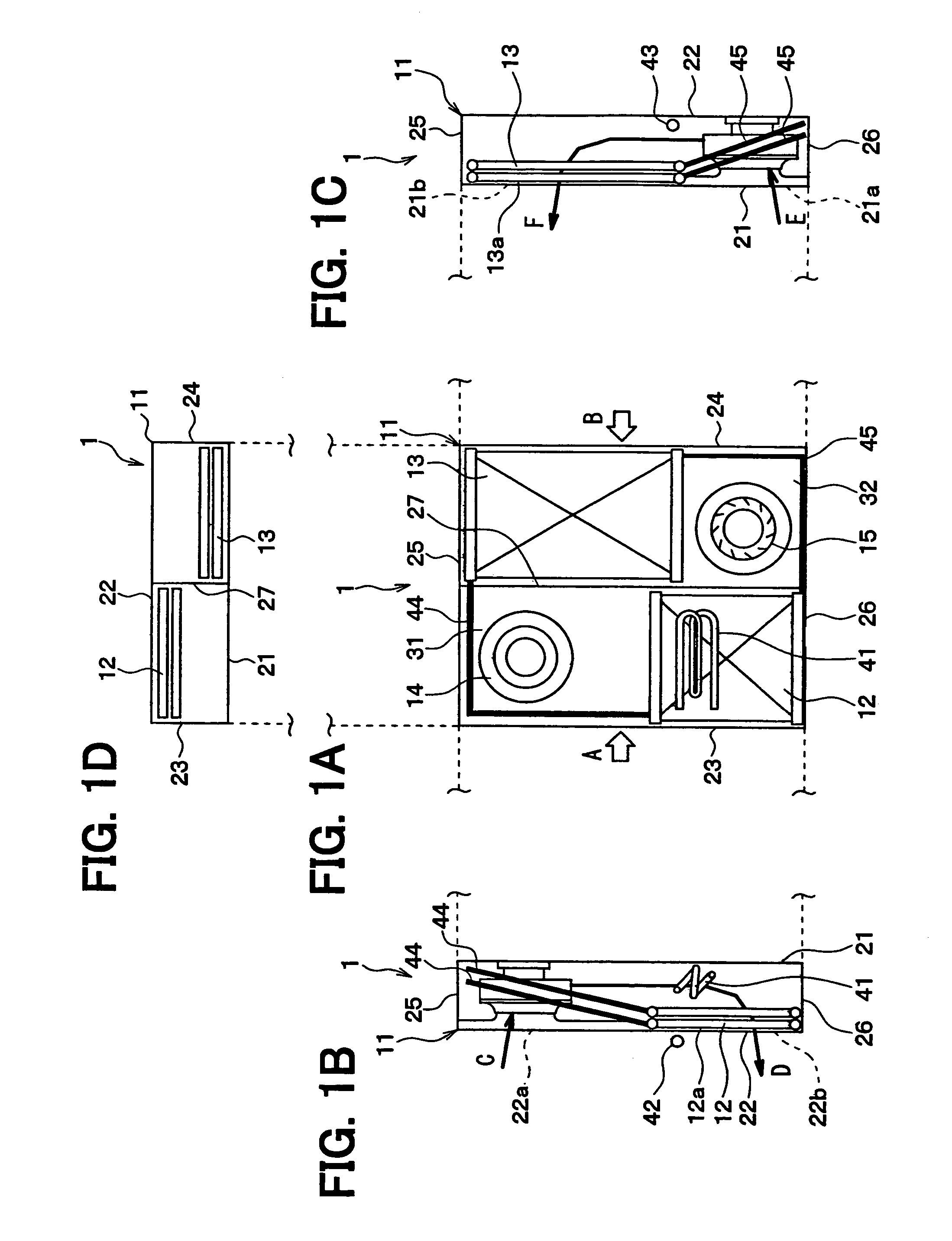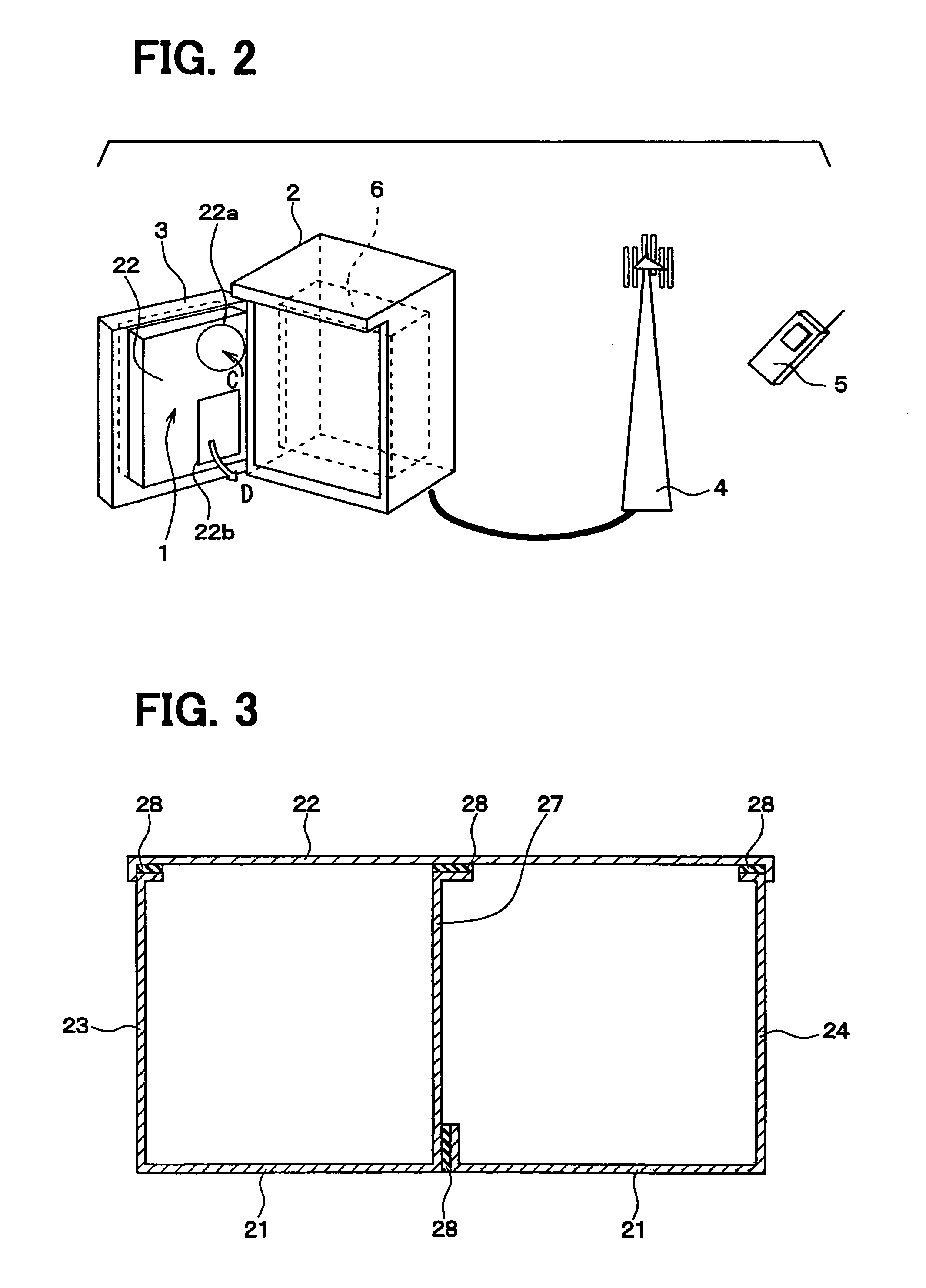Cooling device and method of manufacturing the same
a cooling device and cooling technology, applied in indirect heat exchangers, lighting and heating apparatus, heating types, etc., can solve problems such as difficulty in reducing the thickness of the cas
- Summary
- Abstract
- Description
- Claims
- Application Information
AI Technical Summary
Benefits of technology
Problems solved by technology
Method used
Image
Examples
second embodiment
[0147]Next, a second embodiment of the present invention will be described with reference to FIG. 11. In the second embodiment, the gas pipe 44 and the liquid pipe 45 are arranged in a different manner from the first embodiment. Structures other than the arrangement of the gas pipe 44 and the liquid pipe 45 are similar to those of the first embodiment. Here, like components are denoted by like reference characters and a description thereof is not repeated.
[0148]As shown in FIG. 11, the upper communication part 52 and the lower communication part 53 of the outside air heat exchanger 13 extend through the partition wall 27 of the case 11. The ends of the upper communication part 52 and the lower communication part 53 are located in the inside of the inside air space 31.
[0149]Similar to the first embodiment, the upper communication part 52 and the lower communication part 53 extend through the holes 27a of the partition wall 27 through the connecting members 61. Thus, clearances betwee...
third embodiment
[0162]A third embodiment of the present invention will be described with reference to FIGS. 12 to 15. Here, like components are denoted by like reference characters and a description thereof is not repeated.
[0163]As shown in FIG. 12, the gas pipe 44 has a pipe joining portion 90 in a midstream of the flow of gas refrigerant. Namely, the gas pipe 44 is constructed of a first gas pipe section 44a connecting to the inside air heat exchanger 12 and a second gas pipe section 44b connecting to the outside air heat exchanger 13. The first gas pipe section 44a and the second gas pipe section 44b are joined to each other at the pipe joining portion 90 by brazing.
[0164]The first gas pipe section 44a and the second gas pipe section 44b have the substantially same length. The pipe joining portion 90 is located at the middle of the length of gas pipe 44. Namely, the pipe joining portion 90 is located at a position furthest from the inside air heat exchanger 12 and the outside air heat exchanger ...
fourth embodiment
[0183]Next, a fourth embodiment of the present invention will be described with reference to FIGS. 16A and 16B. In the fourth embodiment, the inside air heat exchanger 12 has first tubes 51a having a cross-sectional shape shown in FIG. 16A, instead of the tubes 51. Also, the outside air heat exchanger 13 has second tubes 51b having a cross-sectional shape shown in FIG. 16B, instead of the tubes 51.
[0184]In the first embodiment, the passage 55 of the tube 51 of the inside air heat exchanger 12 and the passage 55 of the tube 51 of the outside air heat exchanger 13 have the same equivalent diameter. In the fourth embodiment, however, each passage 55a of the first tube 51a of the inside air heat exchanger 12 has an equivalent diameter larger than that of a passage 55b of the second tube 51b of the outside air heat exchanger 13. Here, the equivalent diameter means a diameter calculated by converting a transverse cross-sectional shape of each passage into a circle.
[0185]The first tube 51a...
PUM
 Login to View More
Login to View More Abstract
Description
Claims
Application Information
 Login to View More
Login to View More - R&D
- Intellectual Property
- Life Sciences
- Materials
- Tech Scout
- Unparalleled Data Quality
- Higher Quality Content
- 60% Fewer Hallucinations
Browse by: Latest US Patents, China's latest patents, Technical Efficacy Thesaurus, Application Domain, Technology Topic, Popular Technical Reports.
© 2025 PatSnap. All rights reserved.Legal|Privacy policy|Modern Slavery Act Transparency Statement|Sitemap|About US| Contact US: help@patsnap.com



